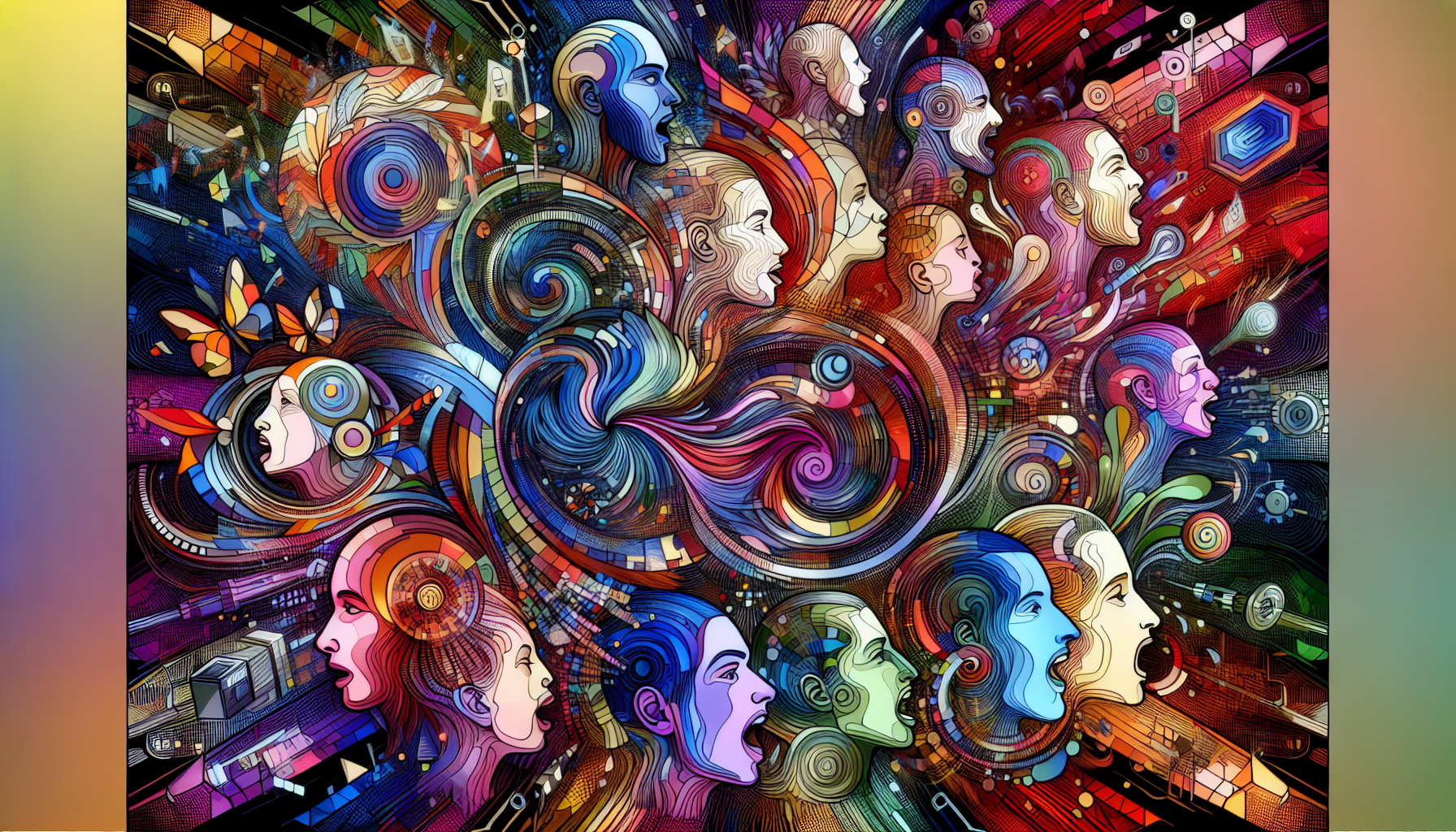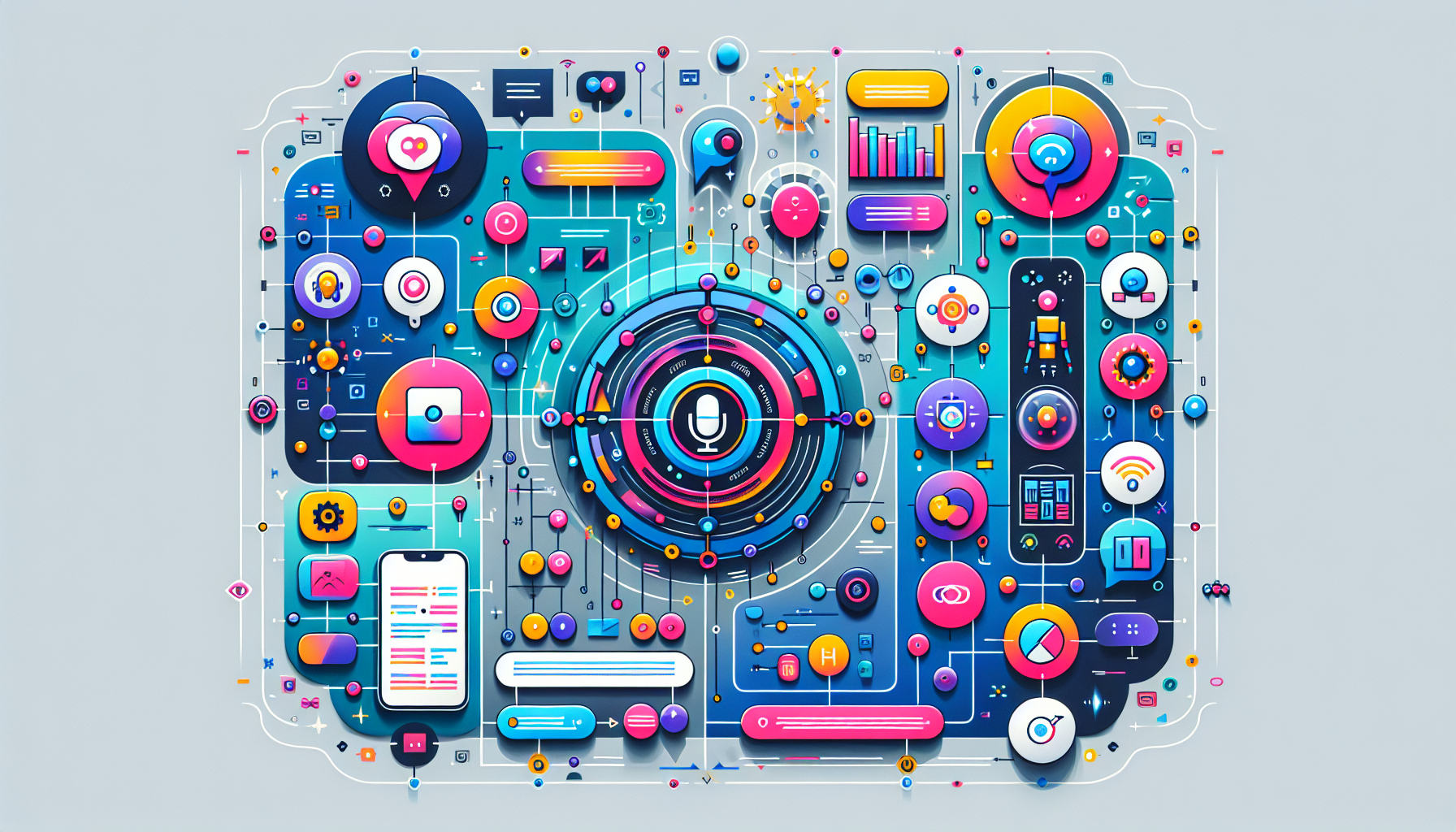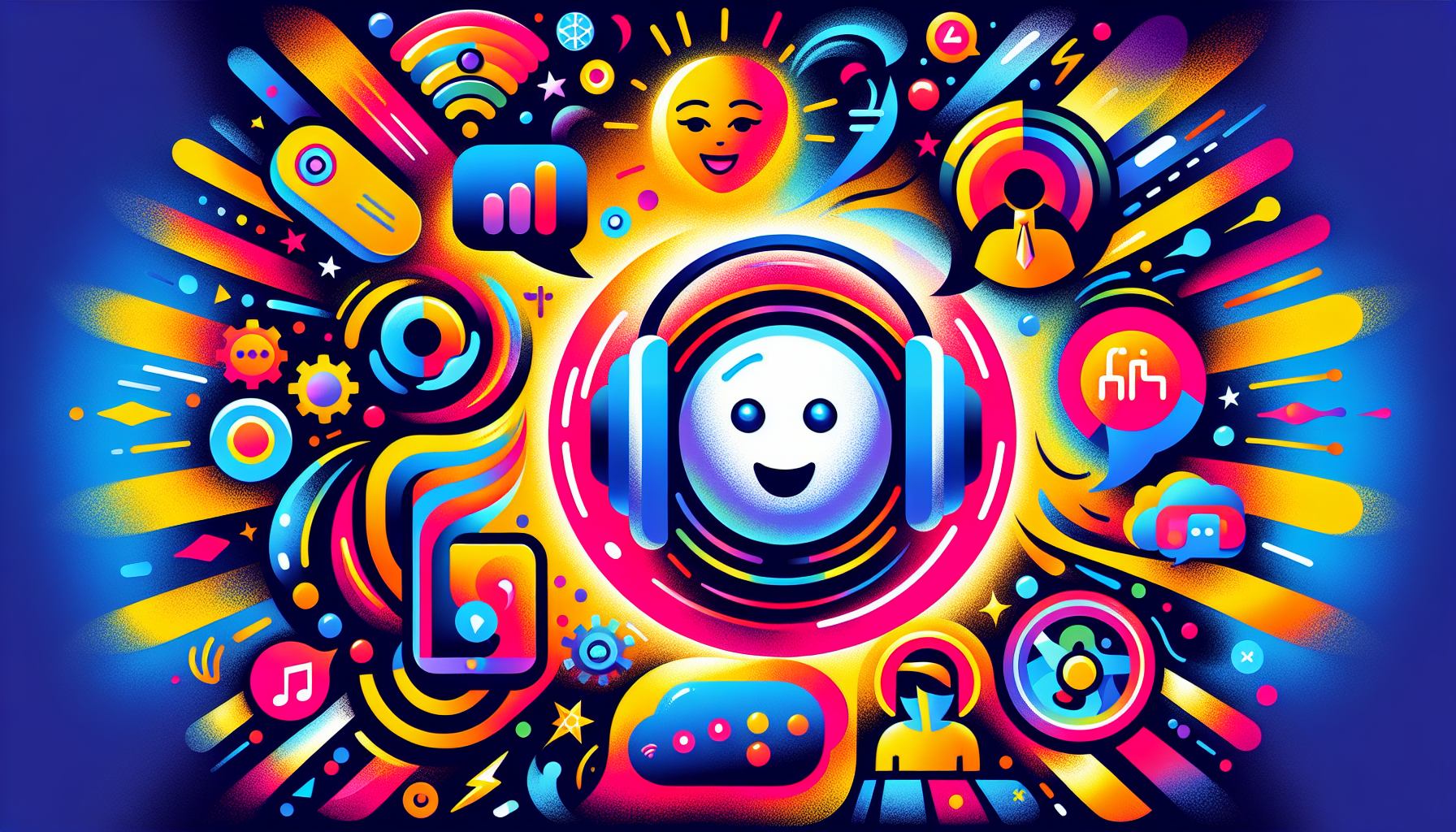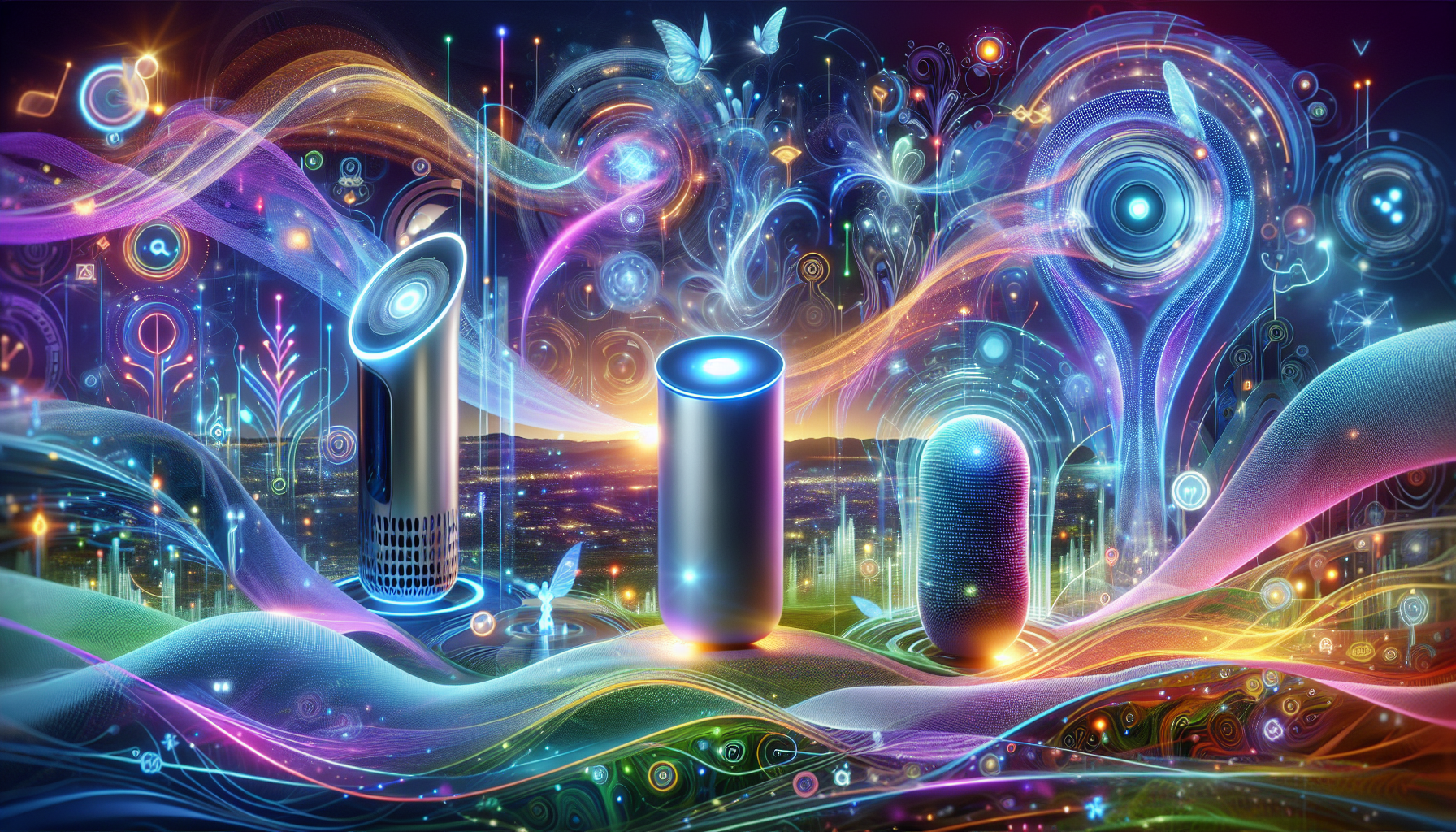Paul
Oct 19, 2024
Table of Contents |
|
As AI voice technology continues to evolve, more businesses and developers are looking for ways to implement realistic, customizable voices into their products. OpenAI, known for its groundbreaking innovations in artificial intelligence, has played a significant role in shaping the AI landscape. But do all AI voice generators rely on OpenAI’s advancements? In this blog, we’ll explore OpenAI’s contributions to the field, examine the key players in AI voice generation, and discuss whether OpenAI is a necessity for developing cutting-edge AI voices—or if there are equally powerful alternatives.
By the end of this article, you’ll have a clear understanding of how AI voice generators function, the role of OpenAI, and what options are available for businesses seeking to integrate voice technology into their systems.
Key Takeaways
- AI voice generators have evolved to produce natural-sounding synthetic voices with emotional depth, enabling tailored audio content creation for various applications.
- OpenAI plays a pivotal role in AI voice technology with its advanced models like GPT-3 and GPT-4, which enhance text generation, while partnering with third-party TTS services for vocal output.
- Training data and deep learning techniques are crucial for improving AI voice generation’s realism and accuracy, but ethical considerations regarding privacy and consent are increasingly important as technology advances.
Understanding AI Voice Generators

AI voice generators are transforming how we interact with technology. These sophisticated tools utilize advanced algorithms to create synthetic voices that mimic human speech with remarkable accuracy and emotional depth. Gone are the days when artificial intelligence voices sounded robotic and monotonous; today’s AI voices are capable of conveying a wide range of emotions, making interactions feel more natural and engaging.
These tools offer voice options in multiple languages and accents, allowing businesses to tailor their audio content to specific audiences. For instance, creating training videos that once took weeks can now be done in minutes, thanks to AI voice generators.
Additionally, the ability to clone voices means that synthetic audio can capture unique human speech patterns, providing a personalized touch to various applications. From real-time translation to increasing accessibility, AI voice generators are reshaping the digital landscape.
The Role of OpenAI in AI Voice Technology
OpenAI has established itself as a pioneer in the domain of AI voice technology, pushing the boundaries of what synthetic voices can achieve. Their Voice Engine, which leverages advanced machine learning techniques, has set new standards in creating natural and expressive voices. This innovation is crucial for integrating voice features seamlessly into various applications, making it easier for developers to implement sophisticated voice functionalities using OpenAI’s Text to Speech API.
How OpenAI’s Voice Engine and TTS API Are Impacting Voice Technology
OpenAI’s Voice Engine is like the heart and soul of modern AI voices! It combines the power of advanced machine learning to create voices that don’t just speak—they communicate with the natural flow, emotion, and tone of a human conversation 🗣️✨. Here’s how it works:
|
Moreover, the integration of OpenAI’s GPT models with voice technology has enabled more dynamic and context-aware conversational capabilities. This synergy allows for more interactive and natural conversations, enhancing the overall user experience.
OpenAI’s contributions and the integration of their GPT models with voice technology are explored below.
OpenAI's Contributions
OpenAI has made significant strides in the AI voice generator market, contributing to the development of innovative voice technologies alongside other tech giants like Microsoft and Google. One of their notable contributions is the Whisper model, released in 2022, which excels in transcribing speech into text with high accuracy across multiple languages and accents. While Whisper focuses on speech-to-text conversion, it complements voice technologies by enhancing the reliability of voice-activated applications.
Furthermore, OpenAI’s development of sophisticated language models, such as GPT-3 and GPT-4, has improved natural language processing (NLP). These models are capable of producing human-like text with coherence and context-awareness, setting new standards in NLP. By generating high-quality, contextually appropriate responses, GPT models enhance the content that is ultimately vocalized in voice applications, leading to more engaging and interactive experiences.
Integration with GPT Models
The integration of OpenAI’s GPT models with voice technology is a game-changer, allowing for the creation of dynamic and context-aware vocal responses. This process involves generating text using GPT models based on user input or predefined prompts, which is then converted into generated speech using text-to-speech (TTS) systems from providers like Google Cloud Text-to-Speech or Amazon Polly. This integration allows for real-time responses, enhancing the interactivity of applications such as virtual assistants and customer service bots.
Adaptive learning is another powerful feature of this integration. GPT models can remember user preferences and previous conversations, providing more personalized responses over time. This leads to more natural and engaging interactions, which are essential for applications like educational tools and interactive storytelling apps.
While OpenAI does not offer its own TTS system, their GPT models can be effectively combined with third-party TTS services to produce high-quality voice outputs.
Training Data and Machine Learning in AI Voice Generation
The evolution of AI voice technology is heavily reliant on the quality and quantity of training data. AI voice generators use extensive datasets of human speech to enhance their output accuracy and realism. This continual learning process allows AI to mimic the nuances of human speech, creating more natural-sounding synthetic voices. Recent advancements have enabled AI to clone voices using minimal input data, showcasing the efficiency of modern training methods.
Deep learning techniques have played a crucial role in advancing AI voice technology. Generative adversarial networks (GANs) and encoder-decoder models are among the architectures that have significantly improved the quality of AI-generated voices.
| What Are GANs? |
|---|
Think of Generative Adversarial Networks (GANs) as a game between two AI players—one is the Generator 🎨 and the other is the Discriminator 🔍. These two players are like rivals working together to create realistic outputs, and in the world of AI voice technology, they’re key to generating natural-sounding voices. Here’s how GANs work:
GANs help improve the quality and realism of AI-generated voices by constantly pushing the Generator to produce better results. This is how AI can sound less robotic and more like a real person when talking or responding in various applications. |
The following subsections will delve into the importance of training data, the deep learning techniques employed, and the ethical considerations surrounding AI voice generation.
Importance of Training Data
Training data is the backbone of AI voice generation, providing the necessary input for creating natural-sounding synthetic voices. OpenAI’s voice cloning tool, for instance, can create unique voices using minimal input data, thanks to its efficient training process. This tool utilizes various recordings, such as those from audiobooks and podcasts, to capture nuanced speech patterns. The continuous learning from large datasets of human speech allows AI to improve its accuracy and realism over time.
The importance of training data cannot be overstated. It is crucial for the development of AI voice technology, enabling it to support multiple languages and accents, and cater to diverse audiences. As AI voice generators continue to evolve, the need for high-quality training data will only increase, driving further advancements in the field.
Deep Learning Techniques in Voice Cloning Technology
Deep learning techniques have boosted AI voice technology, enabling the creation of more lifelike and expressive synthetic voices. Generative adversarial networks (GANs), for instance, are used to improve the quality of voice samples, making them sound more natural and human-like. Encoder-decoder models are another emerging technology that maps text to speech more effectively, enhancing the overall quality of AI-generated voices.
| What is the Encoder-Decoder Model? |
|---|
Imagine the Encoder-Decoder model as a two-part translator 🗣️🔄 that helps convert text into speech in a natural, human-like way. Here’s how it works:
This Encoder-Decoder model helps make AI voices more accurate and expressive, because it’s able to understand the meaning behind the words before turning them into speech. It’s widely used in text-to-speech systems, improving the quality and realism of AI-generated voices by creating smoother, more natural transitions between words and phrases. |
OpenAI has been at the forefront of developing these advanced neural network architectures, contributing significantly to the field of AI voice technology. The integration of these techniques with natural language processing (NLP) allows AI to understand and generate text in ways that closely mimic human communication, paving the way for more sophisticated voice applications using the openai api.
Voice Cloning Technology
Voice cloning technology has made significant strides in recent years, enabling the creation of highly realistic synthetic voices that can mimic the nuances of human speech. This technology has far-reaching implications for various industries, including entertainment, education, and healthcare. By leveraging advanced algorithms, voice cloning can produce synthetic voices that are nearly indistinguishable from real human voices, opening up new possibilities for personalized and engaging user experiences.
Advancements in Voice Cloning
Advances in deep learning and natural language processing have enabled the development of sophisticated voice cloning models that can learn patterns from just a few hours of audio. These models can then generate new voices on-the-fly, allowing for real-time interactions with virtual assistants, chatbots, and other AI-powered systems. This is a significant step forward in making AI voices more natural and expressive.
One of the key breakthroughs in voice cloning technology is the ability to capture the subtleties of human speech, including accent, pitch, and timbre. This is achieved through the use of advanced machine learning algorithms that can analyze and replicate the unique characteristics of a person’s voice. As a result, synthetic voices can now convey emotions and personality traits, making interactions with AI more engaging and lifelike.
Comparing OpenAI with Other AI Voice Solutions

OpenAI has established itself as a frontrunner in the AI voice technology market, influencing the direction of innovation. However, it faces competition from other specialized providers who excel in niche areas. Comparing OpenAI’s offerings with those of its competitors can provide insights into the strengths and limitations of each solution.
This section will explore key competitors and highlight the main differences between OpenAI and Lalals.com.
Key Competitors
The AI voice generator market features several major players, with Lalals.com being recognized for its extensive library of over 300 realistic voices. Lalals.com caters specifically to the needs of content creators looking for high-quality audio outputs, leveraging advanced voice synthesis capabilities to meet these demands.
Despite OpenAI’s leading innovations, it faces stiff competition from established companies like Lalals.com and Google, which have substantial market presence and user bases. Lalals.com’s focus on delivering advanced voice generation capabilities positions it as a notable competitor to OpenAI. Their offerings are tailored to provide customizable voice outputs, making them a preferred choice for applications requiring high-quality synthetic voices.
Lalals.com
Lalals.com offers a dedicated AI voice generator that converts text into natural-sounding speech, supporting multiple languages and various voice options. By providing high-quality voice synthesis using advanced machine learning algorithms, Lalals.com ensures that users can customize voice parameters like pitch, speed, and tone to suit their needs.
Their user-friendly API enables seamless integration into applications, accessible to both technical and non-technical users. The strengths of Lalals.com lie in delivering direct text-to-speech (TTS) services with customizable voice outputs, catering to a wide range of applications from music to interactive storytelling.
Key Differences Between OpenAI and Lalals.com
OpenAI and Lalals.com offer complementary services in AI voice technology, each excelling in different areas. OpenAI specializes in advanced text generation through its language models like GPT-3 and GPT-4, but it does not provide a direct TTS service. Instead, OpenAI’s models need to be integrated with third-party TTS services to convert text into speech. This makes OpenAI ideal for applications needing sophisticated conversational abilities and high-quality text generation.
On the other hand, Lalals.com focuses on direct voice generation, offering a built-in TTS capability that allows for immediate conversion of text into natural-sounding speech. Their customizable voice outputs make them suitable for applications requiring high-quality audio, such as music and interactive storytelling apps.
Combining both platforms can enhance the development of innovative voice applications, providing developers with the flexibility to choose based on project needs or integrate both for optimal results.
| Feature | OpenAI | Lalals.com |
|---|---|---|
| Core Focus | Advanced text generation using language models like GPT-3 and GPT-4 🧠💬 | Direct voice generation with built-in TTS (Text-to-Speech) 🎙️ |
| Text-to-Speech (TTS) Service | No direct TTS service; requires third-party TTS integration 🔗 | Offers native TTS service for immediate voice conversion 🎤 |
| Customization | Customizes text generation, but relies on third-party TTS for voice control 🔄 | Highly customizable voice outputs, allowing adjustments to pitch, speed, and tone 🎛️ |
| Best For | Applications needing high-quality text generation and conversational abilities (e.g., chatbots) 🧑💻 | Applications requiring natural-sounding speech, like music production or interactive stories 🎶📖 |
| Integration | Needs integration with external TTS services for voice output (more flexible for advanced text) 🔧 | Self-contained voice solution, ideal for immediate use and quick implementation 🚀 |
| Strength | Generates sophisticated and context-aware text with language models, excelling in conversational AI 💡 | Excels at delivering human-like, expressive voices without needing additional tools 🎙️✨ |
| Usage Flexibility | Great for complex applications where text understanding is key, but requires additional voice tools 🔄 | Perfect for users seeking plug-and-play voice generation directly from text input ⚡ |
| Ideal Use Cases | Chatbots, customer service bots, and content generation platforms 🗣️ | Audio content creation, virtual assistants, and music/audio production tools 🎧🎵 |
Real-World Applications of AI Voice Generators

AI voice generators have become integral to many aspects of modern life, transforming how we interact with technology. These tools leverage advanced AI to convert text into natural-sounding speech, enhancing user experience across various platforms. From virtual assistants to accessibility services, AI voice technology addresses diverse needs in different sectors.
Here are some specific real-world applications of AI voice generators.
Virtual Assistants
Virtual assistants like Siri, Alexa, and Google Assistant rely heavily on AI voice generators to provide a seamless user experience. These voice assistants use AI voices to enhance user interaction, enabling hands-free operation and allowing users to perform tasks through voice commands. However, they often face challenges such as recognizing unique words or complex commands, which can lead to misinterpretation and incorrect information delivery.
Despite these challenges, AI voices in virtual assistants are designed to understand natural language and provide relevant responses, making them invaluable tools for smart devices and customer service applications. The continuous improvement of AI voice technology promises to overcome these hurdles, offering more accurate and engaging interactions in the future.
Accessibility Services
AI voice technology plays a crucial role in enhancing accessibility for individuals with disabilities. Text-to-speech (TTS) systems convert written content into spoken words, making information accessible to visually impaired users and those with learning disabilities. These systems can be customized to reflect natural speech patterns, providing a more engaging and comprehensible user experience. For example, AI voice cloning can create personalized communication options for individuals with speech impairments, allowing them to communicate more effectively.
The potential of AI voice technology to improve accessibility is vast. It can aid visually impaired users by reading aloud text from screens, books, or signs, and assist individuals with learning disabilities by converting text into speech for easier comprehension. By integrating AI voices into educational materials, we can cater to different learning styles, enhancing the overall learning experience.
Language Barriers
AI voice technology is instrumental in breaking down language barriers, enabling communication across diverse linguistic groups. Targeted regional datasets during training enhance the performance of some AI voice solutions in specific languages and cultural contexts. This tailored approach allows AI voice generators to support communication and understanding in a global context.
AI voice generators facilitate real-time translation services, easing communication between speakers of different languages. They also assist in language learning apps by providing accurate pronunciations and conversational practice, supporting global businesses in reaching wider audiences through multilingual voice content with the help of an AI assistant.
The ability to bridge language barriers with AI voice technology is a significant step towards more inclusive and effective communication worldwide.
Future Prospects and Innovations of AI Voice Tech

The future of AI voice technology is brimming with exciting possibilities and innovations. The market for AI voice generators is projected to expand significantly, driven by advancements in AI and machine learning. Emerging technologies such as real-time voice cloning and cross-language adaptation are becoming more practical due to improvements in computing power and optimization algorithms. These advancements promise to make synthetic voices even more natural and realistic, improving their applicability across various industries.
Integrating emotional intelligence into voice cloning is another future challenge that could lead to more empathetic and engaging interactions. This could completely change customer service, education, and entertainment by creating more personalized and emotionally resonant experiences with emotive voices.
As AI voice technology continues to evolve, it will be crucial to balance innovation with ethical considerations, ensuring that these advancements are used responsibly.
Emerging Technologies
Recent advancements in AI voice generation technology are making synthetic voices sound more natural and realistic. Real-time voice cloning, for example, is becoming more feasible, allowing synthetic voices to adapt to multiple languages and accents. This capability is a significant step forward in democratizing access to high-quality voice technology, making it a game-changer for various industries.
The integration of advanced AI voice technologies presents both opportunities and challenges. While it opens up new possibilities for innovation, maintaining quality and ethical standards will be crucial. As these technologies continue to develop, they will play an increasingly important role in enhancing user experience across different platforms and applications.
Potential Applications
The potential applications of AI voice technology are vast and varied. In the educational sector, AI-generated voices can help create engaging learning materials for auditory learners, improving educational experiences. In customer service,AI voice cloning can create more personalized and engaging interactions through virtual assistants. Imagine a world where virtual assistants not only understand your queries but also respond with empathy and context-awareness, making interactions more meaningful.
AI voice generators can significantly enhance user interaction across various platforms by integrating more natural voice communication. The possibilities are endless, from interactive storytelling apps with dynamic content and expressive narration to educational tools that explain complex concepts through natural-sounding speech.
The far-reaching implications of AI voice technology ensure that it will continue to transform how we interact with digital content and devices in the future.
Summary
AI voice technology has come a long way, transforming how we interact with digital content and devices. From enhancing virtual assistants and accessibility services to breaking down language barriers and paving the way for future innovations, the impact of AI voice generators is profound. OpenAI has played a pivotal role in advancing this technology, contributing sophisticated models and innovative tools that have set new standards in the field.
As we look to the future, the potential applications of AI voice technology are vast and varied. The integration of emotional intelligence and real-time voice cloning promises to create more natural and engaging interactions. However, it is crucial to balance innovation with ethical considerations, ensuring that these advancements are used responsibly. By continuing to push the boundaries of what is possible, AI voice technology will undoubtedly play a significant role in shaping our digital future.
Frequently Asked Questions
What are AI voice generators?AI voice generators are advanced tools that employ algorithms to produce synthetic voices that closely resemble human speech, capturing nuances and emotional tones. This technology enables various applications, from virtual assistants to content creation. |
How does OpenAI contribute to AI voice technology?OpenAI significantly enhances AI voice technology through the development of advanced language models such as GPT-3 and GPT-4, along with tools like Whisper, which collectively improve voice recognition and generation capabilities. |
What are the ethical considerations in AI voice technology?Ethical considerations in AI voice technology revolve around manipulation, privacy, and unauthorized use of data, highlighting the need for robust regulatory frameworks to ensure responsible usage. |
How do AI voice generators help with accessibility?AI voice generators significantly enhance accessibility by transforming written text into spoken words, benefiting visually impaired individuals and those with learning disabilities. This technology ensures that information is more inclusively available to everyone. |
What are the future prospects of AI voice technology?The future of AI voice technology looks promising with advancements in real-time voice cloning, cross-language adaptation, and emotional intelligence, leading to more natural and engaging interactions. These developments will significantly enhance user experiences across various applications. |
Convert Your Voice with AI
Make your voice sound like those of famous arists.
Join Lalals and use our hyper-realistic voice converter now.